Maui vacation, part 2
Dec 10, 2018 20:07:03 #
Here I continue the account of our vacation to Maui last summer. It runs a little long because I did not have time to make it shorter.
We spent several days in the southern part of the island, in the town of Kihei. This is a touristy town that still feels very small and homey (everywhere the island felt laid back, even the main airport). Within walking distance of our rented condo was the main coastal road through town, and if you crossed the street you had access to the beach and ocean. A short drive of a few miles on that that road would soon take you to the Maui National Wildlife Refuge. This is one of many protected natural areas, and I managed to visit the site several times. My first visit to the refuge immediately introduced me to the large Hawaiian garden spider (Argiope appensa) shown in the first picture. These striking spiders were everywhere. My pictures of them from the refuge were ok, but I prefer the one shown here although it was taken at a different location. Most of the time the spiders would be hanging the ‘wrong way’ with only their ventral side being easily accessible. But if you reach around the top and give them a light tap on their back, they usually flipped to the other side of the web and posed for pictures. Further down in this posting I show a tiny male spider of this species. These were generally hanging out near the females in an accessory web. Like other orb weavers, males are very small.
This spider is indigenous to several islands through the Pacific, and are widespread on the Hawaiian islands.
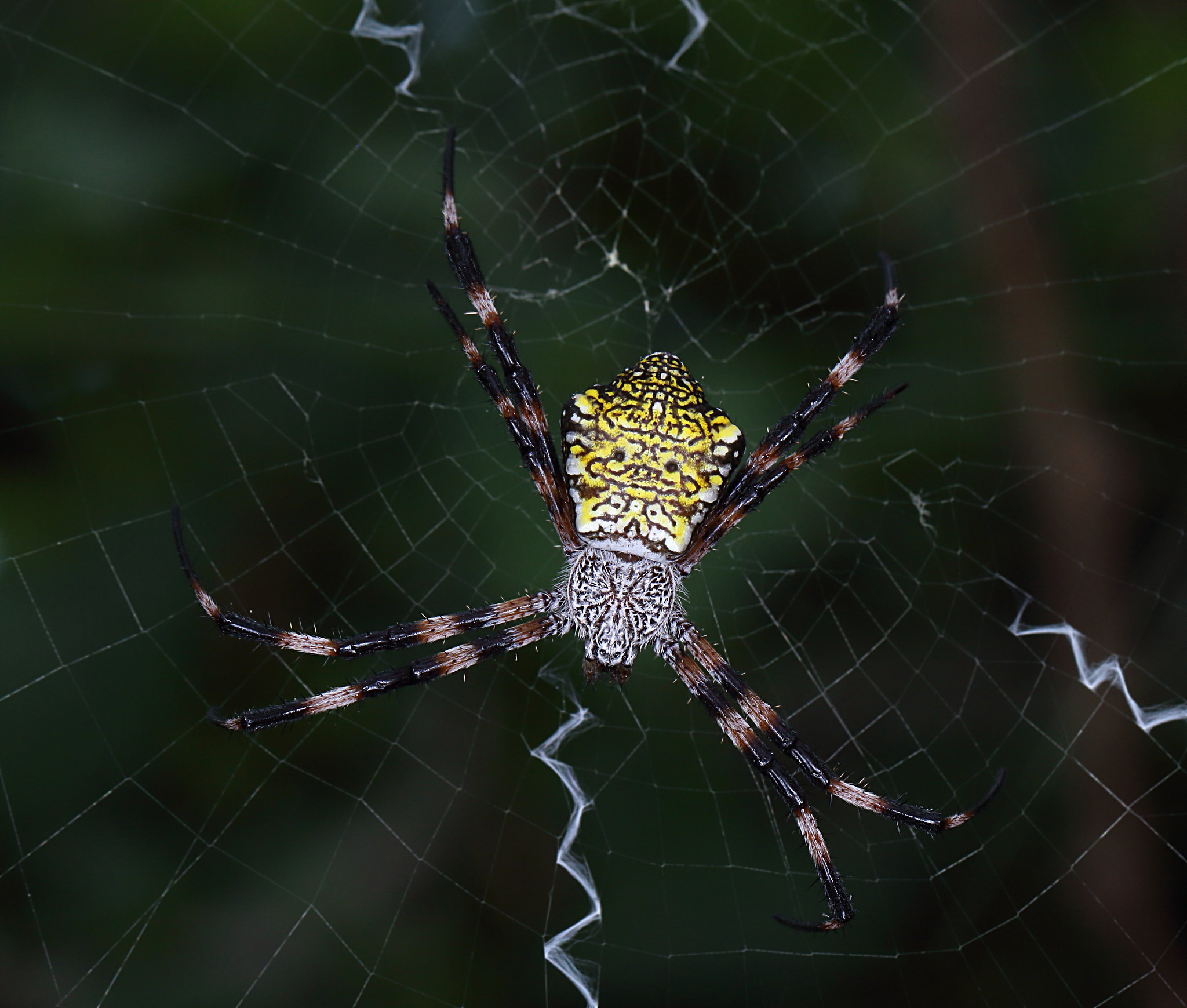 Hawaiian garden spider by Mark Sturtevant, on Flickr
Hawaiian garden spider by Mark Sturtevant, on Flickr
The staff at the Wildlife Refuge was delighted to chat with me, and a kindly employee of Japanese descent, named Sammy, quickly hustled me out for a very interesting tour of their non-public areas. In one of the back lots I came across this adorable praying mantis nymph. I later learned that this was – and I should not be surprised of this – an introduced species. It is the Carolina mantis (Stagmomantis carolina), which is native to the Eastern US. I saw their oothecae in abundance as well. The second picture shows this one at its most dignified…
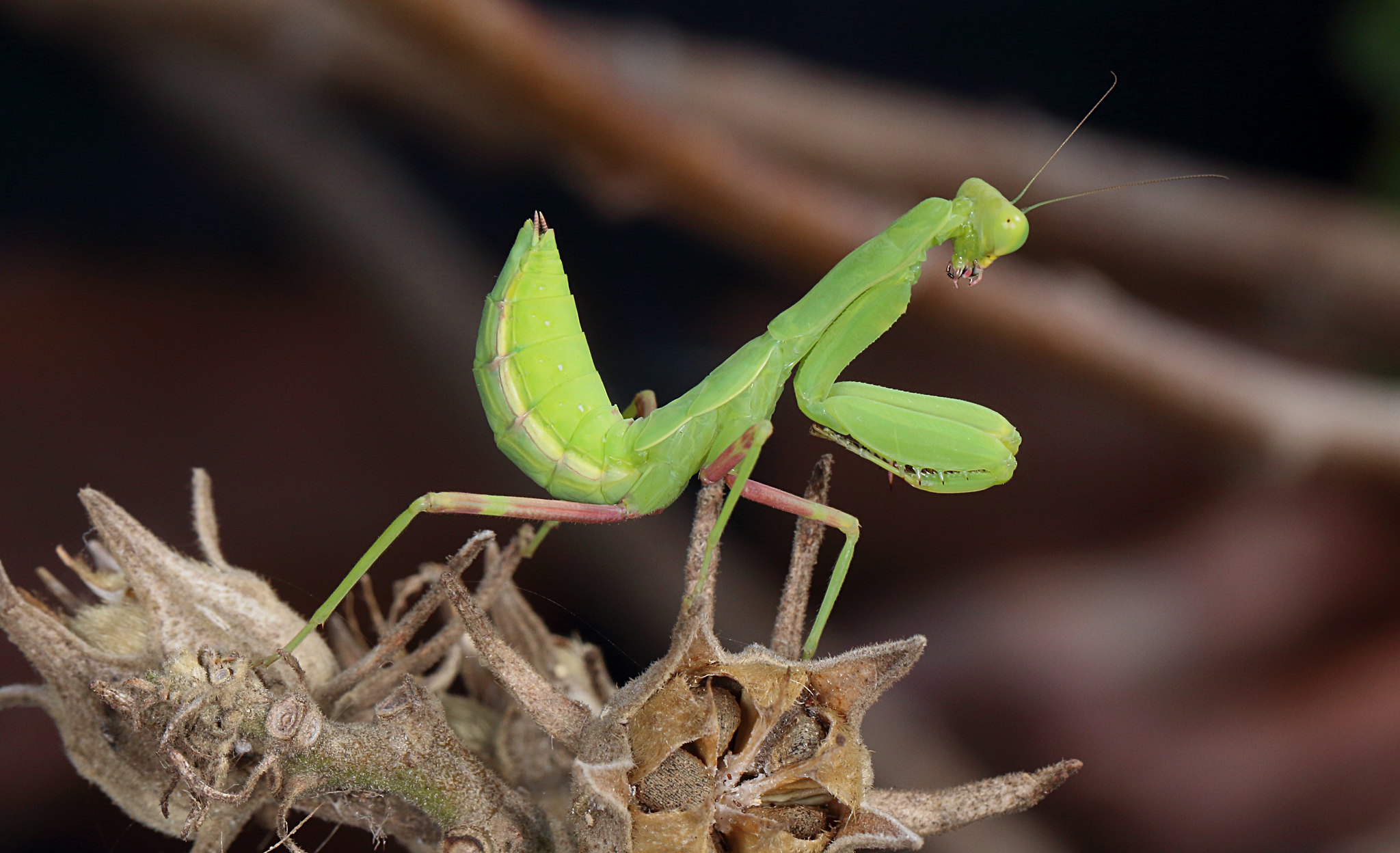 Carolina mantis by Mark Sturtevant, on Flickr
Carolina mantis by Mark Sturtevant, on Flickr
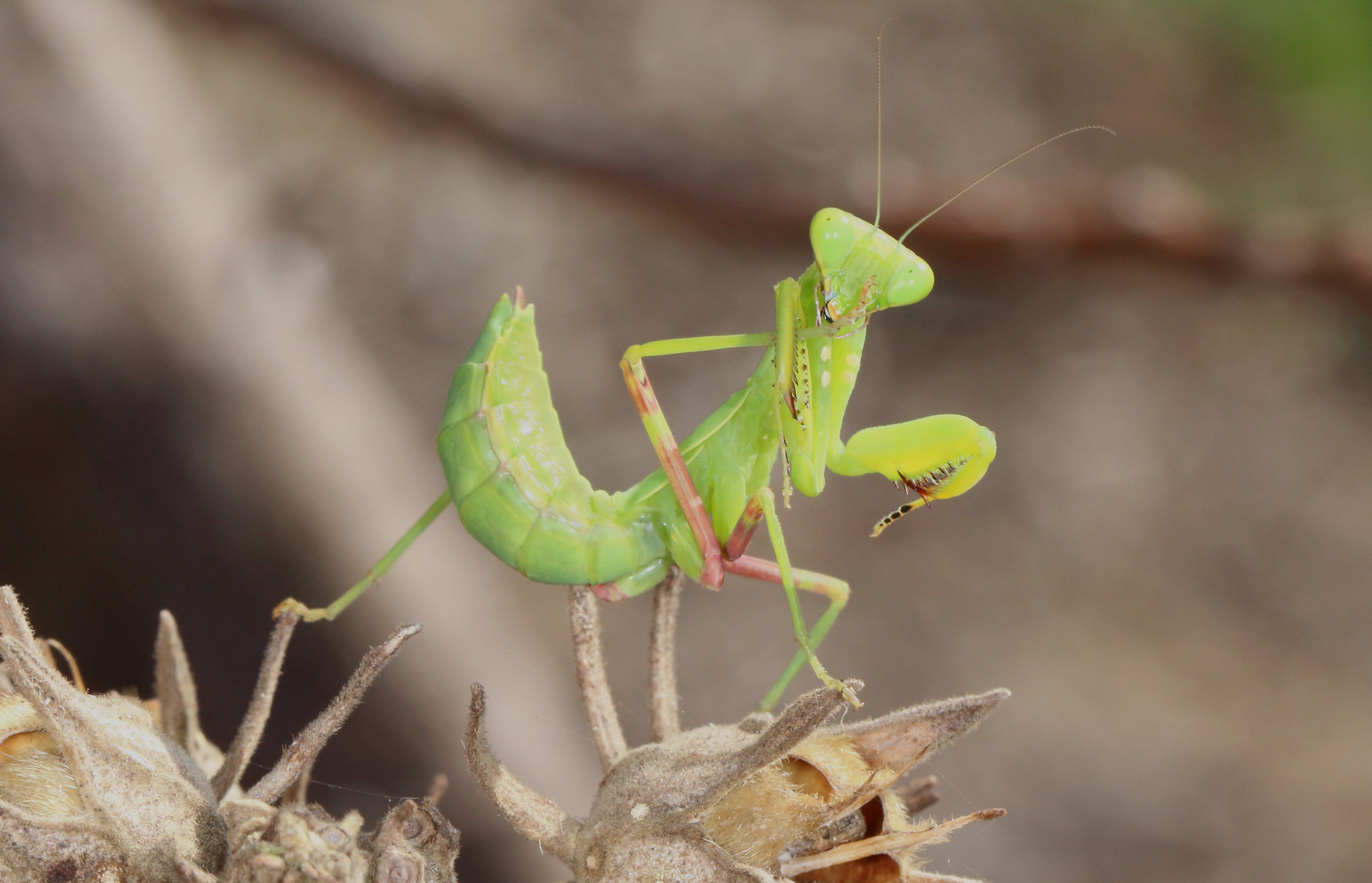 Carolina mantis by Mark Sturtevant, on Flickr
Carolina mantis by Mark Sturtevant, on Flickr
Very regal. I had other encounters with this species as they are quite common. But that will be in a later post.
I soon told Sammy of my great interest in dragonflies, and he explained to me that the best place to see them was nearby, at a satellite region of the wildlife refuge that ran along the coastline. What he described to me seemed unlikely, which was that this region of the refuge had a beachfront boardwalk that runs through marine wetlands, but that dragonflies of several species were numerous there. How could that be? Dragonflies require freshwater. I set out at my next opportunity to check it out.
You can see the coastal boardwalk from here: https://andyandjudi.com/2016/04/22/kealia-wildlife-refuge-and-boardwalk/ . Just seeing these pictures brings back very fond memories of a remarkable day.
Here, seawater from high tides and storms are driven inland to sustain many acres of salt marshes. This mixes with fresh water run-off from the area farms and nearby coastal mountains. The sky was fairly swarming with dragonflies, and their larvae grow in the wetlands by staying farther inland, in parts of the marshes not penetrated by salt water. I saw colorful marine fish which would be at home among corals, schooling in the shallow water under the board walk, while just above them were numerous green darners, roseate skimmers, and wandering glider dragonflies! At various places you could disembark from the boardwalk to the ocean beach, where swarms of dragonflies congregated over masses of driftwood just feet from the ocean! It was amazing.
The windy conditions made it challenging, but my best luck at dragonfly photography was with the roseate skimmers (Orthemis ferruginea), which was good as this was a new species for me although not new for folks in the southwest mainland. So here is a female (very easy to photograph), and my best picture of a male roseate skimmer. As is common, males proved harder to approach.
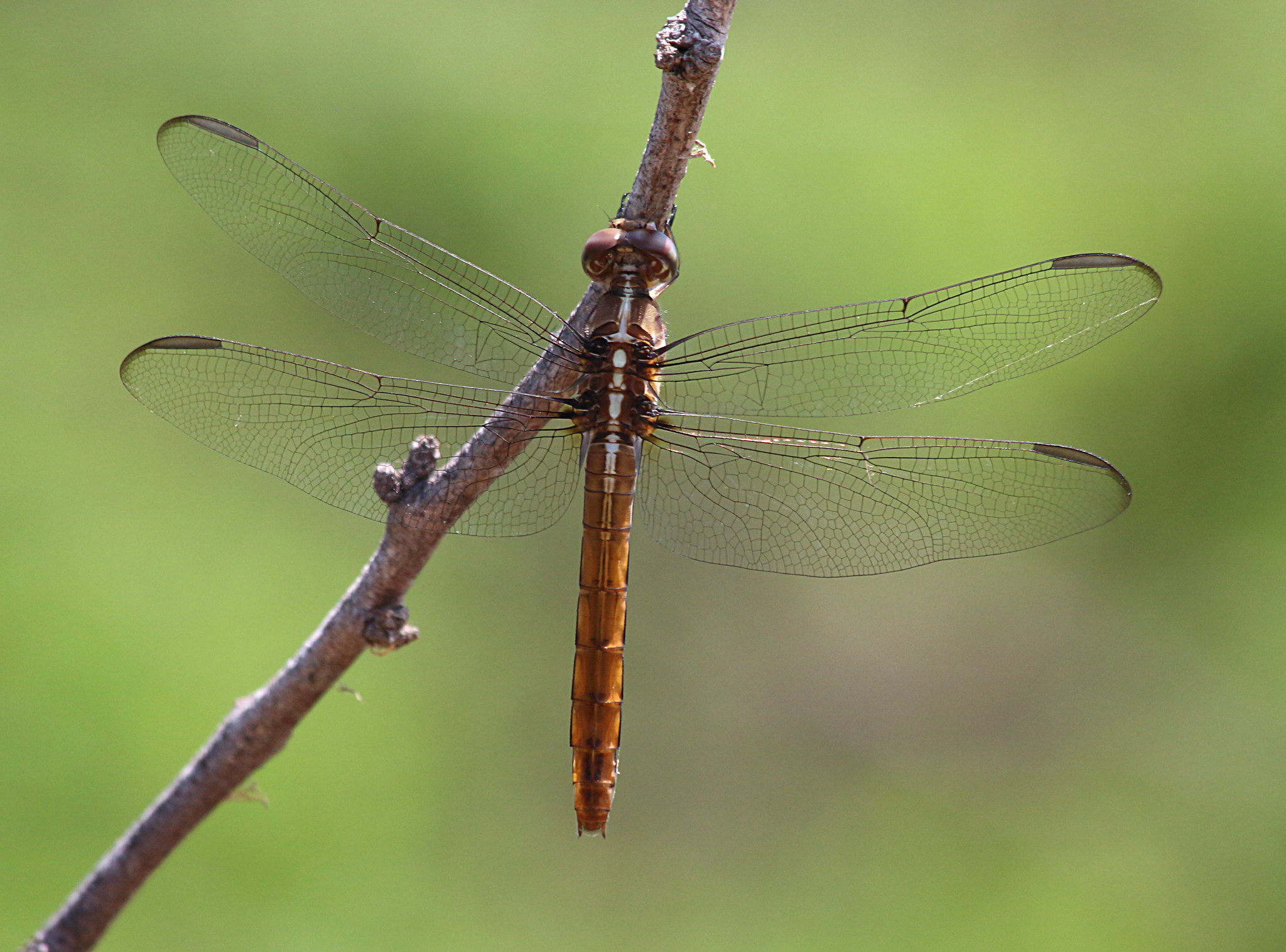 Roseate skimmer dragonfly by Mark Sturtevant, on Flickr
Roseate skimmer dragonfly by Mark Sturtevant, on Flickr
 Roseate skimmer dragonfly by Mark Sturtevant, on Flickr
Roseate skimmer dragonfly by Mark Sturtevant, on Flickr
On the rail of the boardwalk was this cool little jumping spider. I have not been able to identify it, and so it might be a species not found on the mainland.
I was dragged away on various occasions to see this or that Major Attraction on Maui. I did my best to document the critters that were encountered. Much of the eastern interior of the island is dominated by the Haleakalā National Park, which is an enormous volcanic area that climbs to high altitudes, over 10,000 feet at the summit. We were able to hike around well above 8000 feet while looking down on the clouds, and this was difficult as the air was very thin! The most important biological attraction of the area are the silversword plants, which are a fascinating example of speciation under isolation. Silverswords are a kind of plant that are related to sunflowers. Their ancestors came from California, and on the high altitude slopes of various Hawaiian islands they had speciated into a range of striking different forms. Just seeing these is a special occasion for biologists; rather like visiting the Galapagos islands. Here are some pictures of silverswords, which will give you an idea: https://www.arkive.org/hawaiian-silversword/argyroxiphium-sandwicense/ . I have my own pictures, of course.
What about insects? There are some interesting unique species there, not that I was able to see any! But here is a common one which is a seven-spotted ladybug (Coccinella septempunctata). Not at all interesting, except that it is sitting on a dead silversword plant, and to a biologist that is way cool!
I finish with another installment of lizards. There are different species of geckos that can be found on Maui, but the general favorite is the lovely gold dust day gecko (Phelsuma laticauda laticauda). These are pretty common in the more tropical environments there, and they originate from Madagascar. This one was hanging out on a spider plant. When I got close to it, it was for some reason looking intently up as something above it. To get it the gecko to look at me for a picture I merely had to waggle a finger. Sure enough, its attention was redirected to the movement.
We spent several days in the southern part of the island, in the town of Kihei. This is a touristy town that still feels very small and homey (everywhere the island felt laid back, even the main airport). Within walking distance of our rented condo was the main coastal road through town, and if you crossed the street you had access to the beach and ocean. A short drive of a few miles on that that road would soon take you to the Maui National Wildlife Refuge. This is one of many protected natural areas, and I managed to visit the site several times. My first visit to the refuge immediately introduced me to the large Hawaiian garden spider (Argiope appensa) shown in the first picture. These striking spiders were everywhere. My pictures of them from the refuge were ok, but I prefer the one shown here although it was taken at a different location. Most of the time the spiders would be hanging the ‘wrong way’ with only their ventral side being easily accessible. But if you reach around the top and give them a light tap on their back, they usually flipped to the other side of the web and posed for pictures. Further down in this posting I show a tiny male spider of this species. These were generally hanging out near the females in an accessory web. Like other orb weavers, males are very small.
This spider is indigenous to several islands through the Pacific, and are widespread on the Hawaiian islands.
 Hawaiian garden spider by Mark Sturtevant, on Flickr
Hawaiian garden spider by Mark Sturtevant, on FlickrThe staff at the Wildlife Refuge was delighted to chat with me, and a kindly employee of Japanese descent, named Sammy, quickly hustled me out for a very interesting tour of their non-public areas. In one of the back lots I came across this adorable praying mantis nymph. I later learned that this was – and I should not be surprised of this – an introduced species. It is the Carolina mantis (Stagmomantis carolina), which is native to the Eastern US. I saw their oothecae in abundance as well. The second picture shows this one at its most dignified…
 Carolina mantis by Mark Sturtevant, on Flickr
Carolina mantis by Mark Sturtevant, on Flickr Carolina mantis by Mark Sturtevant, on Flickr
Carolina mantis by Mark Sturtevant, on FlickrVery regal. I had other encounters with this species as they are quite common. But that will be in a later post.
I soon told Sammy of my great interest in dragonflies, and he explained to me that the best place to see them was nearby, at a satellite region of the wildlife refuge that ran along the coastline. What he described to me seemed unlikely, which was that this region of the refuge had a beachfront boardwalk that runs through marine wetlands, but that dragonflies of several species were numerous there. How could that be? Dragonflies require freshwater. I set out at my next opportunity to check it out.
You can see the coastal boardwalk from here: https://andyandjudi.com/2016/04/22/kealia-wildlife-refuge-and-boardwalk/ . Just seeing these pictures brings back very fond memories of a remarkable day.
Here, seawater from high tides and storms are driven inland to sustain many acres of salt marshes. This mixes with fresh water run-off from the area farms and nearby coastal mountains. The sky was fairly swarming with dragonflies, and their larvae grow in the wetlands by staying farther inland, in parts of the marshes not penetrated by salt water. I saw colorful marine fish which would be at home among corals, schooling in the shallow water under the board walk, while just above them were numerous green darners, roseate skimmers, and wandering glider dragonflies! At various places you could disembark from the boardwalk to the ocean beach, where swarms of dragonflies congregated over masses of driftwood just feet from the ocean! It was amazing.
The windy conditions made it challenging, but my best luck at dragonfly photography was with the roseate skimmers (Orthemis ferruginea), which was good as this was a new species for me although not new for folks in the southwest mainland. So here is a female (very easy to photograph), and my best picture of a male roseate skimmer. As is common, males proved harder to approach.
 Roseate skimmer dragonfly by Mark Sturtevant, on Flickr
Roseate skimmer dragonfly by Mark Sturtevant, on Flickr Roseate skimmer dragonfly by Mark Sturtevant, on Flickr
Roseate skimmer dragonfly by Mark Sturtevant, on FlickrOn the rail of the boardwalk was this cool little jumping spider. I have not been able to identify it, and so it might be a species not found on the mainland.
I was dragged away on various occasions to see this or that Major Attraction on Maui. I did my best to document the critters that were encountered. Much of the eastern interior of the island is dominated by the Haleakalā National Park, which is an enormous volcanic area that climbs to high altitudes, over 10,000 feet at the summit. We were able to hike around well above 8000 feet while looking down on the clouds, and this was difficult as the air was very thin! The most important biological attraction of the area are the silversword plants, which are a fascinating example of speciation under isolation. Silverswords are a kind of plant that are related to sunflowers. Their ancestors came from California, and on the high altitude slopes of various Hawaiian islands they had speciated into a range of striking different forms. Just seeing these is a special occasion for biologists; rather like visiting the Galapagos islands. Here are some pictures of silverswords, which will give you an idea: https://www.arkive.org/hawaiian-silversword/argyroxiphium-sandwicense/ . I have my own pictures, of course.
What about insects? There are some interesting unique species there, not that I was able to see any! But here is a common one which is a seven-spotted ladybug (Coccinella septempunctata). Not at all interesting, except that it is sitting on a dead silversword plant, and to a biologist that is way cool!
I finish with another installment of lizards. There are different species of geckos that can be found on Maui, but the general favorite is the lovely gold dust day gecko (Phelsuma laticauda laticauda). These are pretty common in the more tropical environments there, and they originate from Madagascar. This one was hanging out on a spider plant. When I got close to it, it was for some reason looking intently up as something above it. To get it the gecko to look at me for a picture I merely had to waggle a finger. Sure enough, its attention was redirected to the movement.
Male Hawaiian garden spider
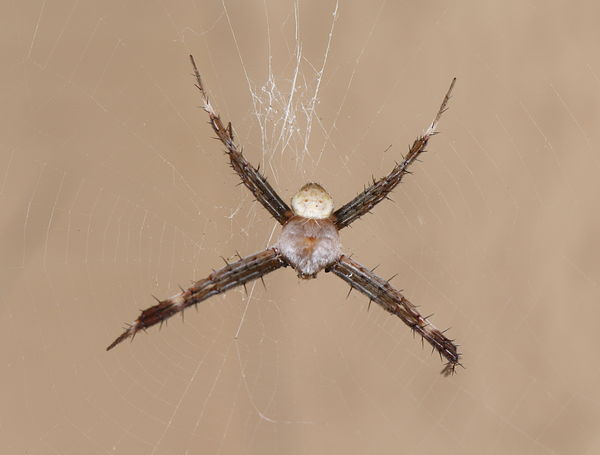
(Download)
Boardwalk jumping spider
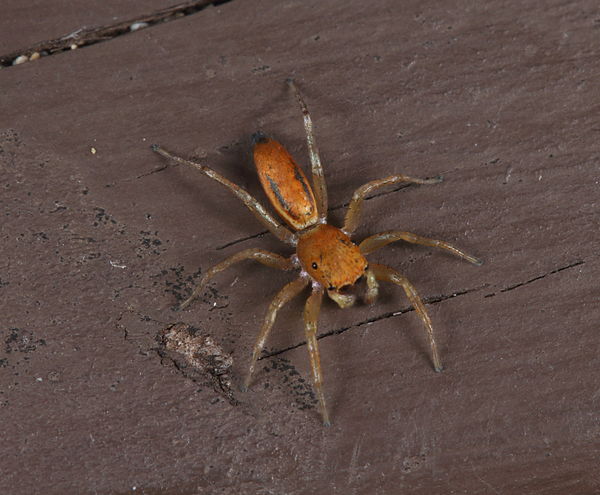
(Download)
Seven spotted ladybug - on a silversword
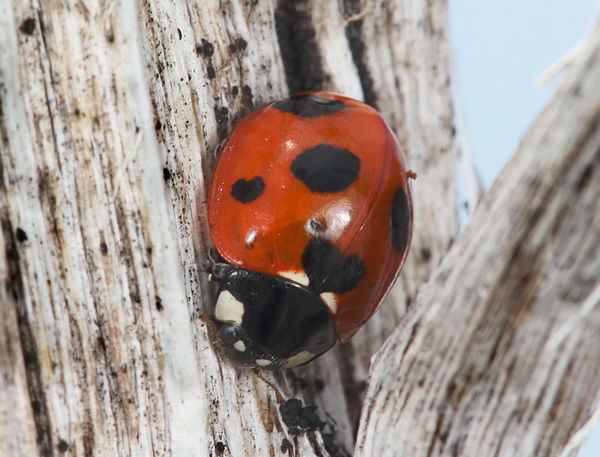
(Download)
Gold dust day gecko
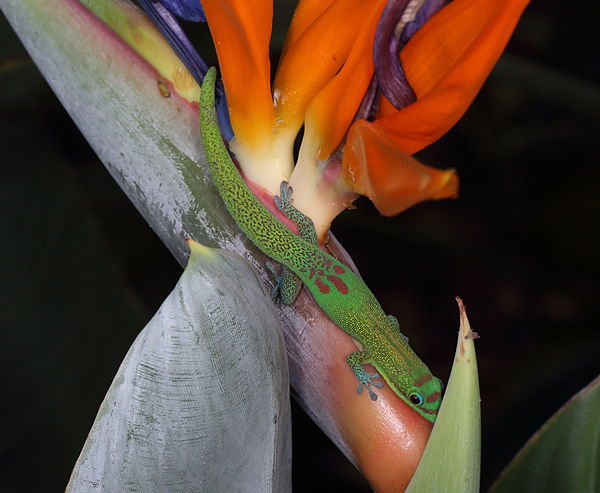
(Download)
Aloha!
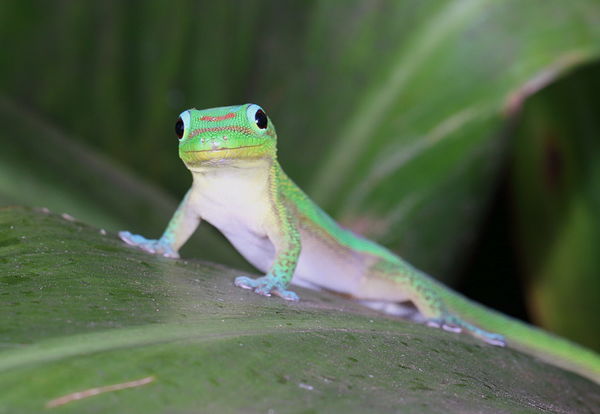
(Download)

(Download)
Dec 10, 2018 20:36:28 #
Mark Sturtevant wrote:
Here I continue the account of our vacation to Mau... (show quote)
The geckos in the Pacific are many and varied. The day gecko is beautiful. Is the first one on a Bird of Paradise (Strelitzia reginae) flower? When I was on Guam in sixties the geckos were housemates(barracks mates). Open air barracks, screens and fans. The only heaters were in our lockers to prevent mildew. Geckos are vocal. Pleasant 'purrrrr', or low trill.
Lucky that Stagmomantis is small. Probably will not out compete native species. They are fun and easy to rear thru generations. Fruit flies and crickets for feeding.
Interesting posts, thank you.
Bill
Dec 10, 2018 21:05:03 #
Dec 10, 2018 22:07:33 #
newtoyou wrote:
The geckos in the Pacific are many and varied. The... (show quote)
Yes, bird of paradise plant. Mental block there for a bit.
Dec 10, 2018 22:27:44 #
Dec 10, 2018 22:58:25 #
Mark Sturtevant wrote:
Yes, bird of paradise plant. Mental block there for a bit.
I was at Hickam AFB for a couple years, too. Seeing some of our common house plants wild there(Ti plant, the one used in lava scree sliding) is an example. Monsteria delisiosa another. HUGE leaves.
Thanks for the memory nudge.
Bill
Dec 11, 2018 00:25:13 #
Absolutely. In the rainforests on the north side of the island, saw a lot of Monsteria (did not know the name, but now I do), plus other kinds of Philodendrons (house plants)! that were growing wild. Along with all sorts of bannana trees and palms. Leaves larger than very large dining room tables. So much of that that after a while one just got used to it.
Dec 11, 2018 01:36:02 #
Mark Sturtevant wrote:
Absolutely. In the rainforests on the north side of the island, saw a lot of Monsteria (did not know the name, but now I do), plus other kinds of Philodendrons (house plants)! that were growing wild. Along with all sorts of bannana trees and palms. Leaves larger than very large dining room tables. So much of that that after a while one just got used to it.
It's fruit resembles a green banana. It is NOT what I call delicious.
Night all.
Bill
As I was looking to find if it is related to bananas( not, by the way) I found that bananas are closely related to ginger. Go figure.
Dec 11, 2018 05:17:38 #
Dec 11, 2018 06:43:28 #
Dec 11, 2018 07:31:09 #
Dec 11, 2018 13:57:56 #
Dec 11, 2018 15:39:55 #
Outstanding series. Always enjoy your commentary along with the photos.
Dec 11, 2018 16:01:58 #
Great shots! The last could be a model for insurance adds? The cross-spider is interesting. Found a similar (but different) one in Costa Rica, same leg arrangement at rest.
Dec 11, 2018 18:35:24 #
If you want to reply, then register here. Registration is free and your account is created instantly, so you can post right away.










